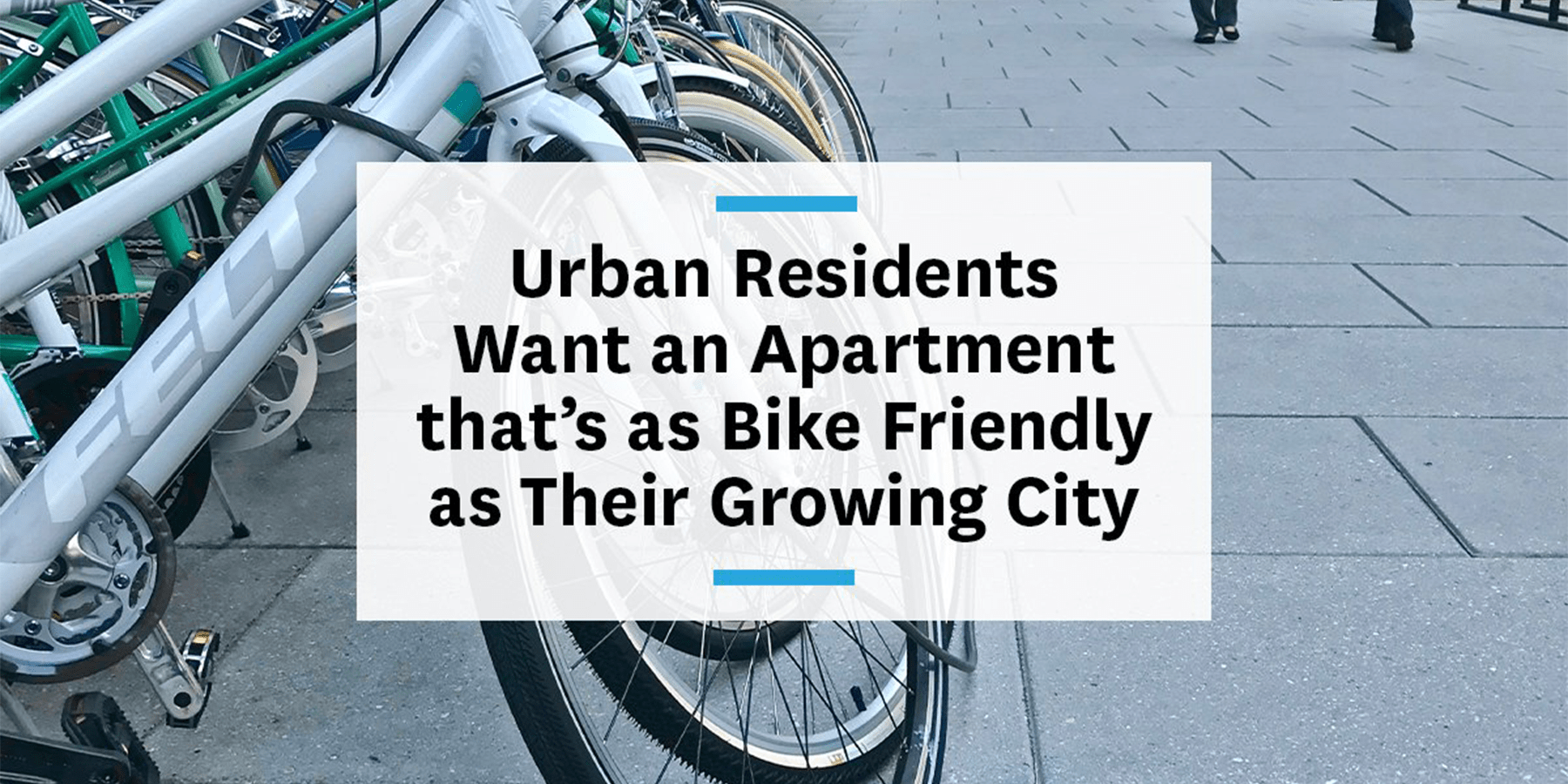With the rise of transportation demand management (TDM), cities are sharing the responsibility of getting residents and commuters to change the way they travel, with the goal of ending up with fewer vehicles on the road. Residents aren’t expected to make a commute change overnight — developers and property managers are an essential part of making it as easy as possible.

In order to make sure they put in the work, increasing numbers of cities have developed requirements, which can range from providing real-time transportation information to adding bike-friendly features to new and existing buildings.
Biking is one of the most eco-friendly and sustainable methods of commuting — not to mention it being one of the happier forms of commuting. Cities and bikeshare companies work to encourage commuters to trade in four wheels for two. An increase in protected bike lanes, bike stations, and access to docked and dockless bikes have only helped to make the switch easier.
Benefits of a bike-friendly apartment building
Reducing the number of parking spots in a residential building can save developers, property managers, and residents a lot of money. Building a single parking spot can cost between $25,000 and $50,000, so trying to get the money back by filling them up is a huge task. These costs then get passed on to residents, who might opt for street parking or get rid of their car completely.
On top of saving money on parking spots, adding bike-friendly features can lead to LEED certifications. A LEED certification is awarded to buildings that make the effort to be energy efficient, healthy, and cost-saving. This certification takes into account many different factors, the way in which residents travel to and from the building plays a major role. Plus, when your building is more eco-friendly, it’s easier to attract new residents!
It starts at point A
Adding bike-friendly features can be a deciding factor for your residents to choose bikes over cars, or even get rid of their cars completely. Knowing which features will be the most effective can be challenging. Let’s go through your options!
- Bike room: With space already limited in most apartments, having a bike taking up more room can be a huge burden to residents. Bike rooms are perfect to securely store bikes when they’re not being used. Not only does this add peace of mind for current residents, it’s a great stop on a leasing tour for potential residents.
- Bike parking: Not all buildings have the space to dedicate an entire room for bike storage, but there’s still something you can do. Blocking off space in your garage for bike parking — or even right outside if you have to — can serve the same function as a bike room.
- Repair stations: As reliable as bikes can be, they still require maintenance and general upkeep as a result of gradual wear and tear. Providing a bike repair station allows residents to take care of minor issues themselves, rather than having to pay a professional for a flat tire.
- Bikes for residents: This may sound crazy, but it’s actually becoming a reality. When residents move into the Wheelhouse in Baltimore, they will receive the keys to their apartment — and a bike. This level of commitment isn’t common, but it should be! The total cost of the 92 bikes ordered was the equivalent to building two parking spots. Seems like a fair trade to us!
Get residents to point B
It’s one thing to add bike-friendly amenities for your residents, but if they don’t know they’re available, they aren’t going to use them. Providing information to your residents is a great place to start in the effort for them to change their habits. This can be anything from showing the amenities on a leasing tour or having information available in the elevators or at the front desk.
To go a step further, buildings can work with local associations or groups to host and participate in biking challenges and events. Penrose Square Apartments in Arlington, VA, won a bronze award from the League of American Bicyclists for serving as a pit stop for commuters who participated in Bike to Work Month. Although this wasn’t the main reason they earned the award, it was a contributing effort in encouraging residents to bike to work.
Buildings can also set up or sponsor local bike tours for residents to get familiar with bike paths, trails, and commuting routes. With bike safety a major concern for commuters, getting them familiar with safe and efficient routes can ease the stress – leading to them choose a bike commute!
Don’t be afraid to get help
Getting started is the hardest part and without help, it’s even more difficult. Luckily, there are organizations all over the country ready to step up. The League for American Bicyclists is a national organization providing information for buildings, both residential and corporate, on what can be done to make buildings as bike friendly as possible. In addition to serving as a resource, they also hand out annual awards to businesses for their level of bike-friendliness, ranging from platinum, gold, silver, and bronze awards, depending on the effort being made.
In addition to national associations, local groups can provide more tailored information for cyclists. The Washington Area Bicyclist Association (WABA) is a local DC organization working to get more people to choose bikes over cars. By offering classes, camps, and interactive maps, riders know where and how to go before leaving home.
Keep on moving
In a car-centric world, bicyclists want to know they are going to be taken care of, especially in their own home. Providing any level of bike storage or parking in your building allows residents to maximize their living space without the added burden of keeping a bike in their apartment. Any bit of effort goes a long way – but you’ve got to start somewhere!




